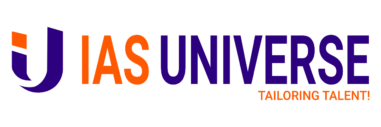Bretton woods conference
- United Nations Monetary and Financial Conference, commonly known as Bretton Woods conference, was held in Bretton Woods, New Hampshire, USA to regulate the international monetary and financial order after the conclusion of World War II (1939-45). Total 44 nations participated, including India.
- The conference proposed 3 institutions
- International Bank for Reconstruction and Development (IBRD), commonly known as World Bank.
- International Monetary Fund (IMF)
- International Trade Organisation (ITO) : could not materialize. Instead, the countries later set up GATT which eventually became WTO.
- While the World Bank and IMF are considered “Specialized Agencies of UN”, the WTO is considered “Related organization of UN” as it doesn’t fulfill all requirements of UN charter on specialized agencies.
IMF (International Monetary Fund)
1. The IMF was conceived at a United Nation Conference in Bretton Woods, New Hemisphere, United States in July 1944 along with the World Bank.
2. It came into formal existence in 1945 with 29 member countries and the goal of reconstructing the international monetary system.
3. It now plays a central role in the management of balance of payments difficulties and international financial crises.
4. Countries contribute funds to a pool through a quota system from which countries experiencing balance of payments problems can borrow money.
5. IMF funds come from two major sources: quotas and loans.
6. Quotas, which are pooled funds of member nations, generate most IMF funds.
7. The size of a member’s quota depends on its economic and financial importance in the world. Nations with greater economic significance have larger quotas.
8. The quotas are increased periodically as a means of boosting the IMF’s resources in the form of special drawing rights.
9. Not all member countries of the IMF are sovereign states, and therefore not all “member countries” of the IMF are members of the United Nations. Example: Hong Kong, and Macao, as well as Kosovo.
Functions of IMF
The IMF functions in three main areas:
- Overseeing the economies of member countries: By monitoring the macroeconomic and financial policies of its member countries, the IMF sees stability risks and advises on possible adjustments.
- Lending to countries with balance of payments issues: The IMF lends money to nurture the economies of member countries with balance of payments problems instead of lending to fund individual projects.
- This assistance can replenish international reserves, stabilize currencies, and strengthen conditions for economic growth. The IMF expects the countries to pay back the loans, and the countries must embark on structural adjustment policies monitored by the IMF.
- Helping member countries modernize their economies: The group provides member nations with technical assistance in areas of Fiscal Policy, Monetary Policy, Banking and financial system supervision. The organization aims to strengthen human and institutional capacity.
Quota System of IMF
- This system follows the logic of a shareholder-controlled organization: wealthy countries have more say in the making and revision of rules.
- The IMF’s quota system was created to raise funds for loans.
- Each IMF member country is assigned a quota, or contribution, that reflects the country’s relative size in the global economy.
- Quotas are determined in SDR (Special Drawing Rights) terms.
- Each member’s quota also determines its relative voting power. Thus, financial contributions from member governments are linked to voting power in the organization.
- Quotas are normally reviewed every five years and can be increased when deemed necessary by the Board of Governors..
| When a country joins the IMF, it is assigned an initial quota based on its size of the economy. The current quota formula is a weighted average of: 1. Country’s GDP (50 percent weight) 2. Openness of the economy (30 percent weight) 3. Economic variability (15 percent) 4. International/Foreign reserves (5 percent) |
Voting Power of Member Countries
- Voting power in the IMF is based on a quota system.
- Each member has two kinds of votes:
- Basic Vote (equal to 5.502% of the total votes)
- Additional Vote (one additional vote for each special drawing right (SDR) of 100,000 of a member country’s quota.)
Special Drawing Rights (SDR/XDR)
- Special drawing rights (SDRs) are supplementary foreign exchange reserve assets defined and maintained by the International Monetary Fund (IMF).
- SDRs are units of account for the IMF, and not a currency per se.
- They represent a claim to currency held by IMF member countries for which they may be exchanged.
- SDRs are allocated by the IMF to countries, and cannot be held or used by private parties.
- The value of a SDR is based on a basket of key international currencies reviewed by the IMF every five years.
- Currently, the SDR basket consists of the following five currencies:
| Currency | Weightage |
| U.S. dollar | 43.38% |
| Euro | 29.31% |
| Renminbi (Chinese yuan) | 12.28% |
| Japanese yen | 7.59% |
| British pound sterling | 7.44% |
Reports Published by IMF
- The World Economic Outlook (WEO)
- Global Financial Stability Report (GFSR)
- Fiscal Monitor (FM)
